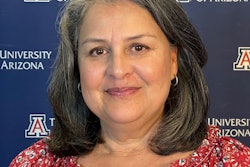Bush Budget Includes Gains for HBCUs, Pell Grants
Historically Black colleges and universities, along with Hispanic-serving institutions, are in line for moderate funding gains under President Bush’s education budget for 2002.
A bare-bones budget plan for the Department of Education calls for a 6.4 percent increase for these minority-serving institutions next year. While specific funding allotments were not released, that percentage gain would translate into another $12 million to $15 million for HBCUs and at least an additional $4 million for HSIs.
Moreover, the president says the 2002 increase for HBCUs and HSIs would represent a “first installment” toward the goal of a 30 percent increase within four years.
Elsewhere, the budget blueprint recommends an additional $1 billion for the Pell Grant program. But most analysts believe the president is backing away from earlier proposals to “front-load” the Pell program; that is, to provide larger grants for first-year students to help them adjust to college.
Some say front-loading may improve retention in higher education, while critics say it may delay financial problems for low-income students who still will face heavy financial pressures.
“We’re pleased the administration has backed off on front-loading,” says Corye Barbour, government relations director for the United States Student Association.
Under Bush’s original plan, a first-year student could get $5,100 from Pell — far more than the $3,750 maximum this year. A student who gets a large first-year grant may find it difficult to return with smaller second- and third-year grants. “It would scare a lot of students out of school,” Barbour says.
But community colleges are among those willing to give front-loading a try. If implemented, the Bush plan would “increase access to students at our institutions,” says David Baime, government relations director for the American Association of Community Colleges.
Bush still could retain some part of front-loading, but his plan calls for targeting new funds to the “neediest students,” not just needy students in their first year of college.
Moreover, lobbyists note that the extra $1 billion probably is not enough to fund front-loading plus a small Pell increase for sophomores, juniors and seniors.
According to several higher education advocates, a $1 billion increase for Pell may translate into only a $150 to $300 increase in the maximum grant available to any needy student. Those levels are far below the $450 increase that higher education won from Congress and former President Clinton last fall.
“We have mixed feelings about the Bush budget,” Baime says. “We’re happy he made Pell Grants a priority,” but he added that the latest figures may mean an “abandonment” of Bush’s front-loading plan.
Bush offered no details on budgets for TRIO programs, work/study and other key college programs in 2002. A full Department of Education budget is expected in April.
© Copyright 2005 by DiverseEducation.com















